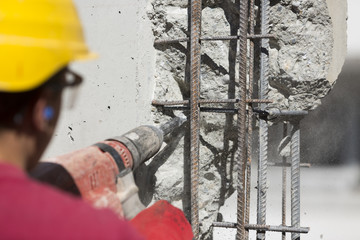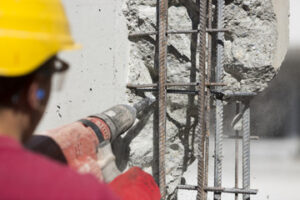Landscapes can add value to a home. They provide curb appeal, and can increase the time a property stays on the market.
They can help reduce energy costs, as grass and trees keep the surrounding area cool and lower air conditioning needs. They can also create natural barriers to reduce noise pollution and provide privacy. Visit Website to learn more.
Color is the most conspicuous and recognizable element in any landscape. It creates excitement and stands out, but it can also be overpowering or even boring depending on the palette used. Color should be used sparingly and should be accentuated by more enduring elements such as form, texture, and size. When considering a color scheme, it’s important to take into account the amount of sun that each area receives. Bright sunlight makes colors appear more saturated, while filtered light causes them to fade. Colors should also be considered when they are used in different seasons, as a brighter color will stand out more during the summer than it does during the winter.
Form is the three-dimensional shape of plant materials and hardscaping structures, such as a garden bed or shed. Form is largely dictated by the branching patterns of plants, but can also be influenced by how a plant sits in the landscape, such as whether it’s a tall, upright tree or a low, rounded shrub. The overall form of a landscape can also be created by the use of edging, fences, and pathways.
Line is the way in which a garden’s features are arranged, and how they interact with each other. Straight lines create structure and formality, while curves create a more relaxed and natural atmosphere. Lines can also be directional, directing the eye upwards to emphasize a feature or downwards to evoke a feeling of relaxation.
Unity is the overall harmony and sense of wholeness in a landscape, and can be achieved through the repetition of line, form, and color. This can be done by utilizing a consistent planting palette or using similar materials in pathways, patios, and landscape edging. The balance of different elements is also important, as too much of one thing can be overwhelming or distracting.
There are many ways to achieve aesthetics in a garden, and it is important that the design is personal. For some, the beauty of a garden is found in its simplicity and minimalism, while for others it is all about the details. Whatever the preference, the fact is that gardens are a source of pleasure for most people, and proper landscape design can improve their enjoyment and even their mood.
Functionality
While aesthetics are important, a well-designed landscape serves more purposes than simply enhancing the appearance of your property. It can also improve your lifestyle, increase the value of your home, and provide benefits to the environment. A functional landscape can also make outdoor activities more enjoyable and provide a place to relax and unwind.
The first step in creating a functional landscape is the design and planning phase. This involves assessing the space and crafting a vision that meets your needs, while taking into account things like drainage, sun exposure, soil conditions, and more. It also includes creating designated areas for specific activities and ensuring proper plant selection to accommodate the climate where you live.
Once the design is complete, it’s time to begin implementing the plans. This can include planting, constructing hardscaping elements, and installing lighting fixtures. It may also involve grading the terrain and altering the shape of the site to achieve your desired results. This part of the process often requires professional assistance, depending on the complexity of the project.
Maintaining a functional landscape requires ongoing care to keep it looking its best. This can include tasks like watering, weeding, pruning, and pest control, as well as seasonal adjustments. It’s also important to consider maintenance requirements when choosing plants and structures, as some might require more upkeep than others.
A functional landscape can have a variety of environmental benefits, including reducing erosion, improving air quality, and providing habitats for wildlife. It can also help to mitigate the urban heat island effect and reduce energy costs by providing shade and lowering temperatures. Landscaping can also improve the health and wellness of the homeowners by promoting physical activity, decreasing stress levels, and encouraging relaxation and enjoyment of the outdoors.
Although it’s important to consider functionality when designing your yard, it is essential to create a landscape that reflects your personal style and tastes. This will ensure that your landscape is a beautiful and inviting extension of your home.
Health
A beautiful landscape can be your personal sanctuary, allowing you to relax and rejuvenate. Spending time in nature has been shown to reduce stress levels, which can improve mental and physical health. Landscaping can also provide privacy by creating a sense of seclusion with fences, hedges, and strategically placed plants. It can also be used to create habitats for wildlife, which can increase enjoyment of the outdoors and contribute to a healthy ecosystem.
In healthcare settings, the use of greenery has been linked to shorter recovery times and a reduction in medication use. This is due to the relaxing effects of being surrounded by nature, which can help patients and staff feel more comfortable and relaxed. Studies have also found that patients who view natural scenery have lower blood pressure and require 30% less pain medication.
Landscape design can also enhance your community by creating social spaces, which can be a place for people to gather and strengthen relationships. Communities can benefit from a sense of pride in their surroundings, as well as foster environmental stewardship by working together to maintain the health and beauty of a landscape.
Landscapes have numerous environmental benefits, including reducing air pollution, soil erosion, and providing habitats for wildlife. The planting of trees and other vegetation is a sustainable resource, removing carbon dioxide from the atmosphere while providing oxygen and reducing soil degradation. Landscaping can also help with water conservation by reducing runoff, and preventing soil loss by using the proper materials and installing water features. In addition, a properly designed landscape can increase the energy efficiency of your home by shading it and helping to regulate temperature. Lastly, landscaping can also help to improve the quality of your home’s air by introducing pollinator-friendly and native plants that decrease the need for chemical pesticides and fertilizers.
Environment
Landscaping can have a positive impact on the environment by using plants and other natural elements to reduce soil erosion, improve air quality, and promote wildlife habitats. Additionally, it can help to conserve water by reducing the need for irrigation and by promoting water-efficient practices like rainwater harvesting and drip irrigation. The process can also include installing native grasses and plants that are well suited to the local climate and soil conditions, thereby minimizing the need for fertilizers and pesticides.
Another environmentally sustainable aspect of landscaping is the use of recycled materials in the construction and maintenance of outdoor features like patios, walkways, retaining walls, and gardens. This includes the use of bricks and stones reclaimed from old structures, as well as the use of drought-tolerant plants and low-maintenance lawns that require less watering. Additionally, incorporating green space and trees into the design of residential properties encourages people to spend more time outdoors, which in turn has numerous health benefits.
The way a landscape is maintained has a significant impact on public perception. Research has shown that people perceive landscapes with dense, messy plots to be unattractive and unsafe, but if the plants are mowed frequently and have defined edges, they can become more acceptable. Additionally, landscape designers can use design cues to indicate that a garden is well-cared for; for example, a stone wall or a lawn with crisp lines can signal that the garden has been mowed and weeded.







